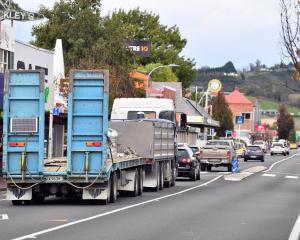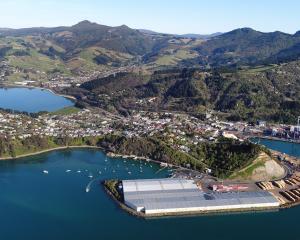
That was the warning from Dunedin Mayor Dave Cull yesterday, as councillors considered a staff report detailing work on the council's 11 integrated catchment management plans.
The catchment plans covered most parts of Dunedin, and included information about the potential flooding risk in each area, identified by computer modelling of a variety of scenarios, including climate change, sea-level rise and a one-in-100-year flood.
Council operations general manager Tony Avery told the meeting a note about identified flooding threats would be added to the land information memorandums (LIMS) of homes in potential problem areas.
The council needed to inform people of areas potentially threatened by problems such as "surface ponding" when it had that information, he said.
That worried Mr Cull, who said the flooding threats identified by the modelling were not accurate enough to identify individual homes at risk.
A disclaimer in the council's own report on the catchment plans warned the flooding information was "not sufficiently detailed" to identify individual properties at risk, and was "subject to uncertainty".
Mr Cull questioned whether information should be added to individual properties' LIMs, given the disclaimer.
"Is it fair then to apply the information to individual properties on the LIM?"
Mr Avery said all properties within areas of the city potentially threatened by flooding would have the same standardised note added to their LIM, noting the possible flooding threat in their area, rather than specific warnings for individual properties.
The LIMS would also note the maps were not sufficiently detailed to account for individual properties.
That would help the council avoid any threat of future legal action from a property owner who unwittingly bought in a flood-prone area, then pursued the council for not disclosing information about the risk, he said.
"If we don't do that there's a risk of future claims against the council," Mr Avery said.
However, Mr Cull said the flip-side was a risk the council could face claims from owners whose homes were devalued by information added to LIMS that might not be accurate in the case of their properties.
The debate at yesterday's infrastructure services committee meeting ended with chairman Cr Andrew Noone saying the plans were primarily to help direct and prioritise council spending on stormwater and other infrastructure in the future.
However, the information could in future also shape decision-making by the council in its regulatory role through the district plan, he noted.
The debate came after council water and waste services manager John Mackie last week conceded some "isolated" parts of South Dunedin might need to be abandoned, and other development restrictions considered.
That would happen if engineering solutions proved to be too expensive, but would need to be considered by council planning staff and councillors in future, he said.
The suburb had been the first to have a catchment plan prepared, as a pilot, because of the number of flooding incidents and complaints from the area.
Maps showing areas potentially affected by flooding were yet to be made public, but would be available in the next week, councillors were told yesterday.











